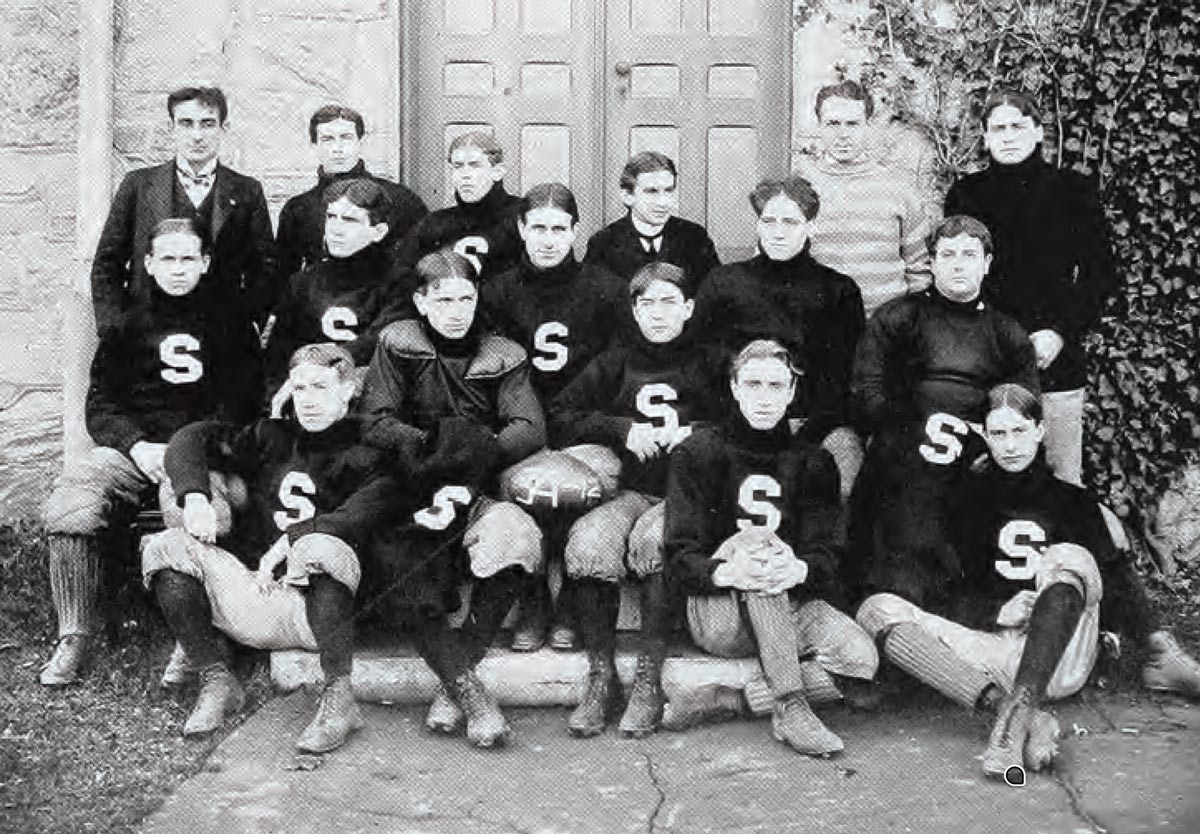
A Legacy of Grit and Glory: Swarthmore College Football
The program reached the end of its run in 2000, but its legacy endures.
In the late 19th and early 20th centuries, Swarthmore football rose to prominence under the leadership of coaches like George H. Brooke, whose tenure from 1892 to 1909 brought the Garnet numerous victories over regional powerhouses.The team became known for both careful preparation and bold tactics, earning respect across the Eastern Seaboard.
A giant of that era was Robert “Tiny” Maxwell, who earned football All-America honors after leading the Garnet to a 7–1 record in 1905. He left Swarthmore the following year to play professional football, but wore his Swarthmore jersey for all team pictures during his pro career. The prestigious Maxwell Award, given every year to the best player in college football, is named after him.
In the 60s, the Garnet Tide won a pair of MAC South Championships. In the 1980s, under Coach Tom Lapinski, the program experienced a resurgence, claiming multiple Centennial Conference titles.
The program’s success would not last, however, as the Garnet Tide struggled through much of the 1990s. Then, in 2000, the College made the controversial decision to discontinue the football program, citing concerns over resource allocation and alignment with institutional priorities.
Former football student-athletes, coaches, and teams in the Garnet Athletics Hall of Fame include Maxwell, Alan Valentine ’21, Lee MacPhail Jr. ’39, Dick Esrey ’50, Dick Hall ’52, Ed Greene ’85, Rob Ruffin Jr. ‘92, Chip Chevalier ’93, Ernie Prudente, and the 1984 team.
Thanks to these contributions, and those of so many others, the program’s storied history remains a source of pride for many throughout the College community.